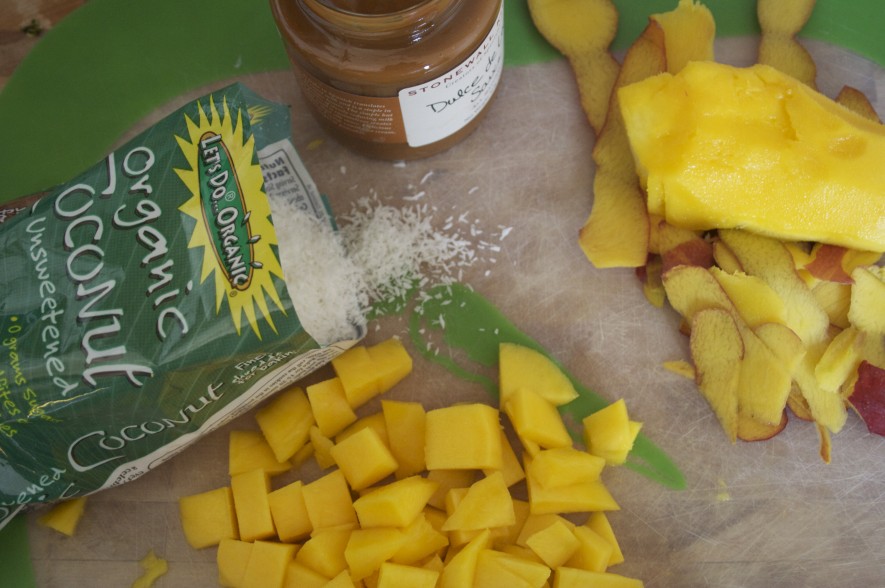Posts Tagged ‘Dulce de leche’
Brandy Alexander, it goes down easy12.12.10
I was on a mission to find “Latinized” versions of holiday drinks, like the egg nog and mulled cider that now abound in outdoor market around the city. And I found them. In the December issue of the Food Network magazine, a handy guide perfect for adding to your off-line recipe collection featured how-to’s for Hot Dulce de Leche, Mexican Hot Chocolate and Coconut Nog, as well as festive concoctions perfect for warming us up from the inside out (ei. maple chai) and getting us into the spirit with a little bubbly (ei. kir royale).
But this week, as I read through Melissa Clark’s rediscovery of eggnog in the New York Times, I remembered the holiday traditions of my life back home. Along with an arduous fruit cake production that would tie up the kitchen for days, Mom would always be ready to prepare her own decadent interpretation of one of her favorite drinks, the Brandy Alexander. She whipped up this creamy elixir every time she was ready to entertain (which was almost daily). With exuberant gusto she combined condensed milk, evaporated milk, white rum and crème de cacao, blended it with ice and poured the frosty mixture into delicate rose-colored goblets, topping each glass with a sprinkle of cinnamon. The result was a dreamy, creamy drink that is (almost) worthy of replacing dessert. As Feist best puts it in her song, this drink definitely “goes down easy”.
This holiday I invite you to make a batch, bottle it up and give it away as homemade gifts. Or keep it, invite your favorite people over for a drink and celebrate how sweet life can be.
Cora’s Brandy Alexander
1 ½ cans of condensed milk
2 ½ cans of evaporated milk
1 can of white rum
1 can of crème de cacao (or your favorite chocolate liqueur)
powdered cinnamon and/or cinnamon stick
note: use one of the empty cans to measure the rum and liqueur
Whisk all the ingredients together in a large bowl. Blend with ice or mix in a cocktail shaker. You can also serve without the ice. Top with cinnamon. Enjoy!
Sara’s Oatmeal11.07.10
When it comes to oatmeal, I’m all peace and love. I welcome all kinds of oats into my pantry, I don’t discriminate. Sometimes it’s steel cut oats that grace my breakfast table with their texture and nuttiness, leaving their chewy remnants on my copper pot; other times instant is best (especially on dark mornings when my cool sheets hold me captive and I end up rushing out the door in a frenzy). One thing is for sure, though, when it comes to oatmeal, simple is best (none of that peaches and cream, maple and brown sugar stuff). Using plain oats lets me dress up my bowl in a different “outfit” every day. Because my oatmeal, like me, thrives on variety, one day it’ll be a conservative affair, with cinnamon, dollops of honey and a few scattered raisins; and another it’ll be a wild child, spiked with mango, coconut flakes, granola and drizzled with dulce de leche.
Whether you’re an oatmeal virgin or oatmeal pro, here’s a latin-ized interpretation to put a smile on your face and keep you going straight into Spring.
Sara’s Oatmeal
makes 2 servings
1 cup of oats (preferably quick cook)
2 cups of liquid (milk, water or a mixture of both)
cinnamon
1 banana
1 mango
coconut flakes
granola
dulce de leche
Heat liquid and oats in pot to a boil. Meanwhile, slice half of the banana into very thin slivers (this will give your oats a creamy consistency, I picked up this technique at a favorite blog I follow here), and add to pot once it starts to boil. Now, stir mixture briskly with a wooden spoon, until all of the fruit has dissolved into the oats. If you like your oatmeal thicker, cook a few more minutes or remove from heat now. Add your toppings.



Food For Thought